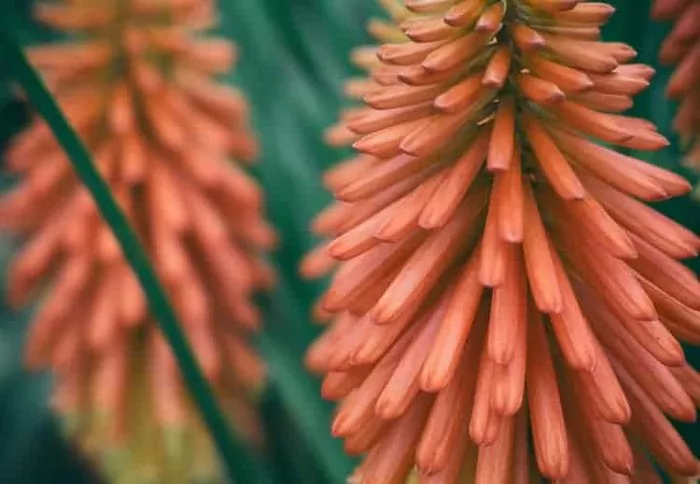Aloe vera, renowned for its myriad health benefits and versatile applications, is a cherished plant in many households and gardens. Its thick, succulent leaves contain a gel rich in nutrients, making it a staple ingredient in various skincare products, dietary supplements, and medicinal concoctions. However, while most people are familiar with the benefits of aloe vera gel, fewer are aware of the plant’s flowering stage and the potential it holds. In this article, we explore the often-overlooked aspect of aloe vera flowers and provide insights into what can be done with them.
Understanding Aloe Vera Flowers
Before delving into the practical applications of aloe vera flowers, it is essential to understand their characteristics and significance. Aloe vera plants typically produce tall stalks, known as inflorescences, adorned with clusters of tubular flowers. These flowers vary in color, ranging from vibrant shades of yellow and orange to pale hues of pink and red, depending on the species and environmental conditions.
While the appearance of aloe vera flowers is undoubtedly striking, their primary purpose is reproduction. Aloe plants are self-fertile, meaning they can pollinate themselves, although cross-pollination by insects such as bees and hummingbirds also occurs in their natural habitat. Once pollinated, the flowers give way to seed capsules containing numerous small seeds, facilitating the plant’s propagation.
Harvesting Aloe Vera Flowers
Harvesting aloe vera flowers requires careful timing and attention to detail. Unlike the leaves, which can be harvested periodically without harming the plant, removing the flowers too early or too late can affect the plant’s reproductive cycle and overall health.
Ideally, aloe vera flowers should be harvested when they are fully mature but before they begin to wilt or shed petals. Look for flowers that have fully opened and exhibit vibrant colors, indicating peak freshness. Gently snip the stalks using clean, sharp scissors, taking care not to damage the surrounding foliage or stem.
It is worth noting that aloe vera plants typically bloom in cycles, with new flowers appearing periodically throughout the plant’s lifespan. Therefore, harvesting should be done selectively to allow the plant to continue flowering and setting seeds for future propagation.
Culinary Uses of Aloe Vera Flowers
While aloe vera gel remains the most popular part of the plant for culinary purposes, aloe vera flowers can also be incorporated into various dishes and beverages, adding a unique flavor and aesthetic appeal.
One creative way to use aloe vera flowers is to incorporate them into salads and fruit bowls. Their delicate, slightly tangy taste complements fresh greens and fruits, enhancing both the flavor and visual appeal of the dish. Simply remove the petals from the flowers and sprinkle them over the salad for a refreshing twist.
Additionally, aloe vera flowers can be infused into beverages such as herbal teas and cocktails, imparting a subtle floral aroma and hint of sweetness. To make aloe vera flower tea, steep fresh or dried flowers in hot water for several minutes, then strain and sweeten to taste. For cocktails, muddle the flowers with other ingredients to extract their essence and enhance the drink’s complexity.
Medicinal Properties of Aloe Vera Flowers
Beyond their culinary uses, aloe vera flowers possess medicinal properties that have been valued for centuries in traditional medicine practices.
One notable benefit of aloe vera flowers is their anti-inflammatory properties, which can help alleviate various skin conditions such as sunburns, rashes, and acne. To harness these benefits, infuse aloe vera flowers in carrier oils such as coconut or almond oil to create soothing topical treatments. Alternatively, blend the flowers with aloe vera gel to enhance its healing properties and create a multipurpose skincare solution.
Moreover, aloe vera flowers contain antioxidants that can boost immune function and protect against oxidative stress. Incorporating aloe vera flower extracts into dietary supplements or herbal remedies may help support overall health and well-being, particularly in combating age-related ailments and chronic diseases.
Aesthetic and Decorative Uses
In addition to their culinary and medicinal applications, aloe vera flowers can serve as decorative accents in various settings, adding a touch of natural beauty and elegance.
For indoor spaces, place freshly cut aloe vera flowers in vases or jars filled with water to create stunning floral arrangements. Their vibrant colors and unique shapes make them an eye-catching centerpiece for dining tables, mantelpieces, or windowsills. Alternatively, dry aloe vera flowers by hanging them upside down in a well-ventilated area, then use them to embellish wreaths, potpourri, or crafts.
In outdoor gardens, aloe vera flowers attract pollinators such as bees and butterflies, contributing to the ecosystem’s biodiversity. Planting aloe vera alongside other flowering plants can create a visually stunning landscape while supporting local wildlife populations.
Conclusion
While aloe vera gel remains the most prized component of the plant, aloe vera flowers offer a wealth of possibilities that should not be overlooked. From culinary delights to medicinal remedies and decorative accents, these vibrant blooms add both flavor and flair to various aspects of our lives. By exploring the diverse uses of aloe vera flowers, we can unlock their full potential and appreciate the beauty and utility they bring to our homes and gardens.


